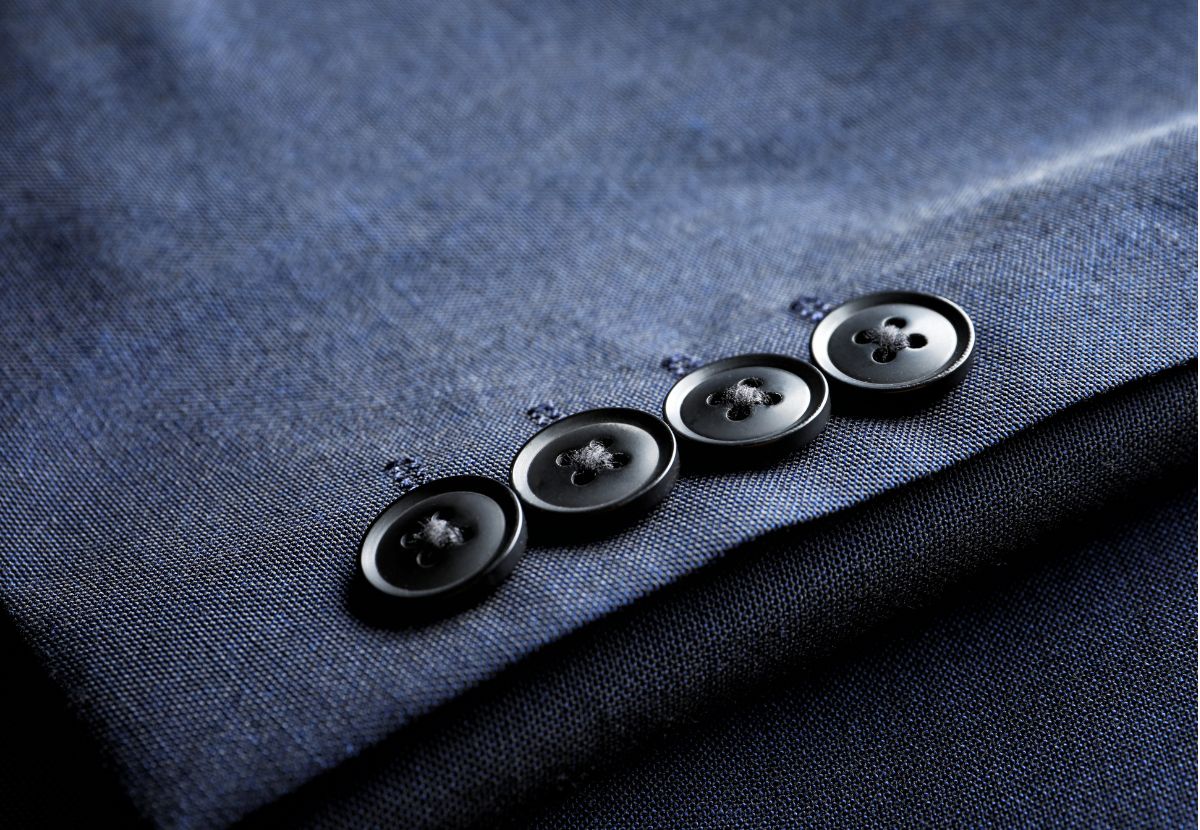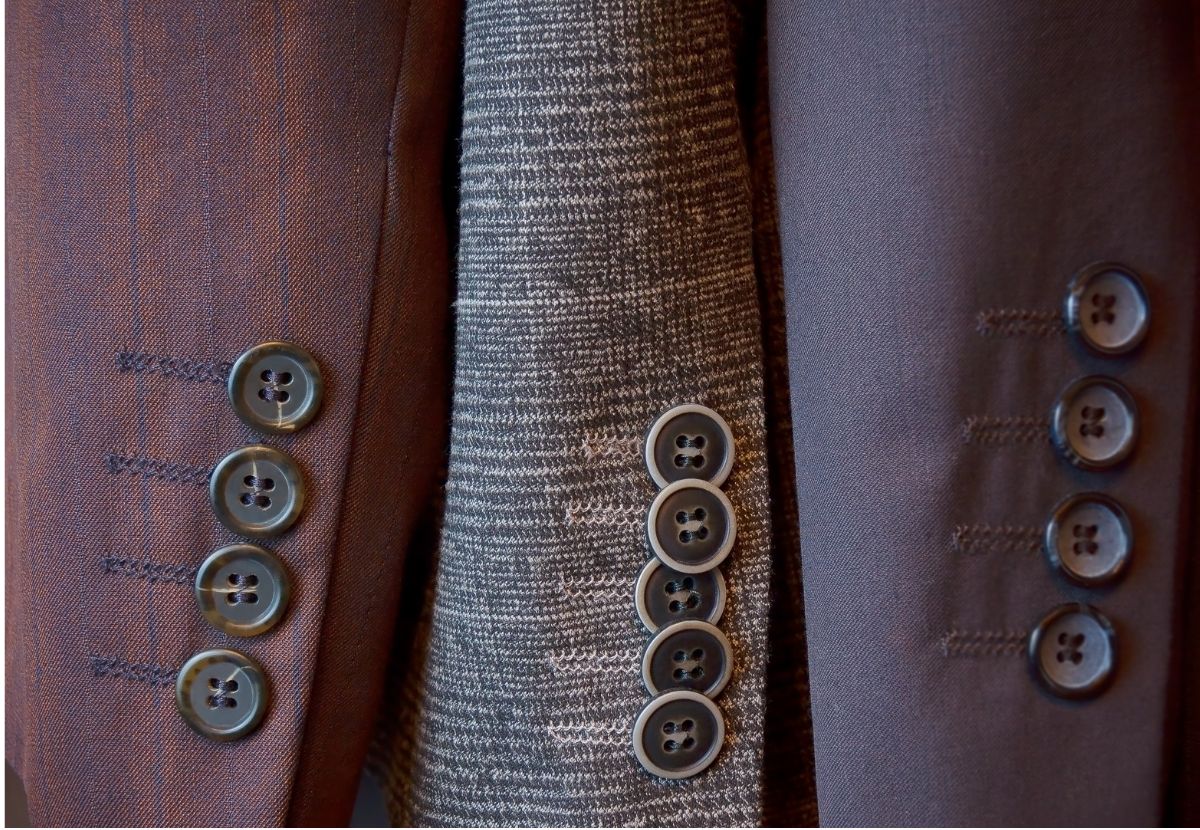Welcome to Shirtsmockup.com Online Apparel PSD Mockup Shopping Store!
Jul 29, 2024 / By Mahananda Sarkar / in Jacket
Suit jacket sleeve buttons seem like a small detail, but they carry a wealth of history, style, and functionality. Whether you're a fashion enthusiast or someone looking to refine their wardrobe, understanding these buttons can enhance your appreciation for suit craftsmanship. This guide covers everything from their origins to their modern-day significance.
The story of sleeve buttons starts in the 17th century. Back then, overcoats had buttons running down the length of the sleeve to help with warmth and mobility. These buttons were functional, allowing wearers to adjust their sleeves as needed.
By the 1660s, frock coats became fashionable. These coats had slimmer sleeves with buttons on the cuffs. The number of buttons varied over time, but eventually, three buttons became the standard for most suits. However, the true origins of sleeve buttons are still debated, with many myths and legends surrounding their creation.
Some believe that Napoleon Bonaparte ordered buttons on sleevesto prevent soldiers from wiping their noses on their uniforms. Others say that sleeve buttons are a symbol of wealth and status. Regardless of their origins, sleeve buttons have become a staple in men's fashion.

Standard buttons are the most common type of sleeve button. They don't touch each other and are evenly spaced along the cuff. This style is simple and classic, suitable for most occasions.
Kissing buttons are slightly more sophisticated. In this arrangement, the buttons are placed so they barely make contact. This adds a touch of elegance to the sleeve without being overly flashy.
Waterfall buttons appear to cascade over each other. This style takes up less space on the sleeve and creates a unique visual effect. It's a great choice for those looking to add a bit of flair to their suit.
Angled buttonholes are placed at a 45-degree angle. This style often features contrast buttonhole colors, adding a pop of color to the sleeve. It's a subtle way to make a statement without overwhelming the overall look.
Functional sleeve buttonholes are a hallmark of custom clothing. Unlike decorative buttons, these buttonholes can be unbuttoned. They can also be styled with contrasting threads, offering another opportunity for personalization.
Originally, sleeve buttons served a practical purpose. They allowed men to roll up their sleeves without removing their jackets. This was particularly useful when jackets were made from heavier materials and worn for work or combat.
Today, sleeve buttons are often more decorative than functional. However, they still hold historical significance and can indicate the quality of a suit. For instance, working buttonholes on a jacket sleeve can take time to alter. If you need to adjust the sleeve length, removing the buttons and altering the sleeve from the bottom is often easier.
The number of buttons on a suit jacket sleevecan affect the style and formality of the jacket. Here's a quick rundown:
A 2-button sleeve is rare but can be a contemporary style choice. It's often seen on more modern, fashion-forward suits.
A 3-button sleeve has a sporty and light cut. It's perfect for a blazer or a casual, less formal look. This style is versatile and works well for both business and social settings.
A 4-button sleeve is more suitable for formal occasions. Leaving the last button unbuttoned can enhance the tailored look and showcase the quality of the suit. This style is often seen in high-end and custom-made suits.
Sleeve buttons are typically placed at a standard distance from the end of the sleeve. This placement is essential for maintaining the balance and proportion of the jacket.

Folding and sewing material underneath the sleeve is a common technique. This approach can be used to shorten sleeves without altering the button placement. It's a practical solution that preserves the original design of the jacket.
The design process involves selecting the quantity, layout, and color combination of buttons and buttonholes. Each choice can add a unique touch to the suit, allowing for personalization and creativity.
Sleeve buttons are a key detail in a tailor-made suit. They offer a unique touch to an otherwise uniform design. Open-sleeve buttonholes that can be unbuttoned are a true mark of a custom suit. This feature is rare in ready-made suits and adds a layer of sophistication.
Sleeve buttons and buttonholes can be customized with contrasting colors. This adds a stylish and individual note to a suit, making it stand out. Customization options are endless, from the type of button to the color of the thread.
Sleeve buttons are a fascinating aspect of suit jacket design. They have a rich history and come in various styles to choose from. Whether functional or decorative, sleeve buttons can add a touch of sophistication & elegance to a suit. Understanding their history, style, and functionality can help you make informed decisions when choosing a suit jacket.
If you want to learn more about suit jacket details or need help choosing the perfect suit, consider consulting a tailor or fashion expert. They can provide personalized advice and help you find a suit that fits your style & needs perfectly.
Jul 20, 2025 by Nayan Ali
Jul 09, 2025 by Nayan Ali